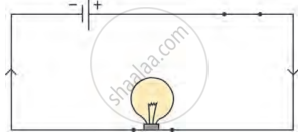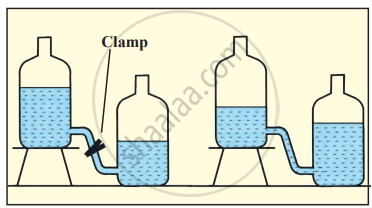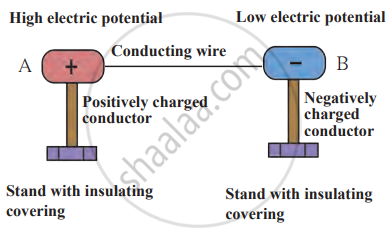1. Aim: To observe the flow of water due to the difference in levels and relate it to the concept of electric potential.
2. Requirements: Two plastic bottles, a rubber tube, a clamp, and water.
3. Procedure
- Set up the two bottles as shown in the figure.
- Connect the bottles with a rubber tube.
- Fill one bottle with water while keeping the other empty.
- Use a clamp to stop water flow in the tube.
- Remove the clamp and observe what happens.
Level of water and direction of flow
4. Observations: When the clamp is removed, water flows from the bottle with a higher level to the one with a lower level. The flow stops when the water levels in both bottles become equal.
5. Conclusion: Water flows due to the difference in levels between the two bottles. Similarly, in electricity, the flow of electric charges depends on the electric potential difference between two points. Just as water stops flowing when levels are equal, electric charges stop moving when the potential difference becomes zero. To keep water (or electricity) flowing, a constant difference in level (or potential) must be maintained. This experiment demonstrates how a difference in levels (for water) or potential (for electricity) drives flow.




